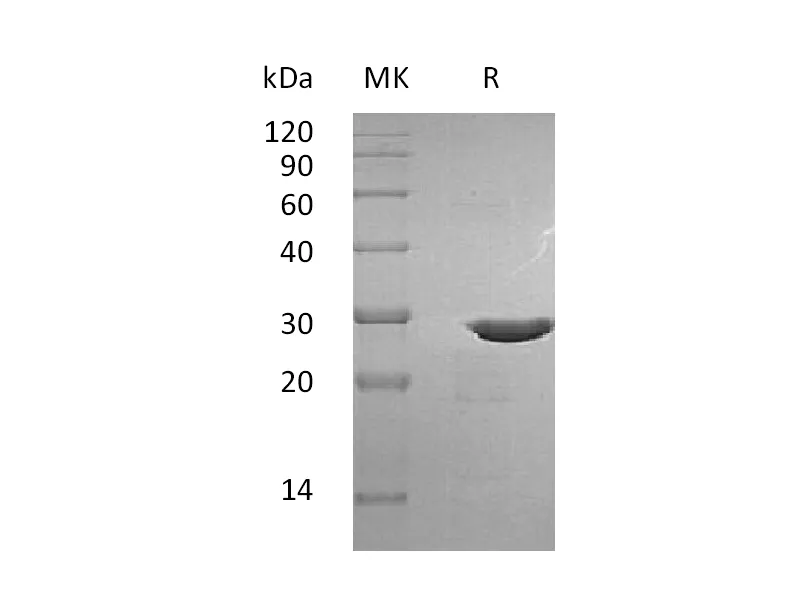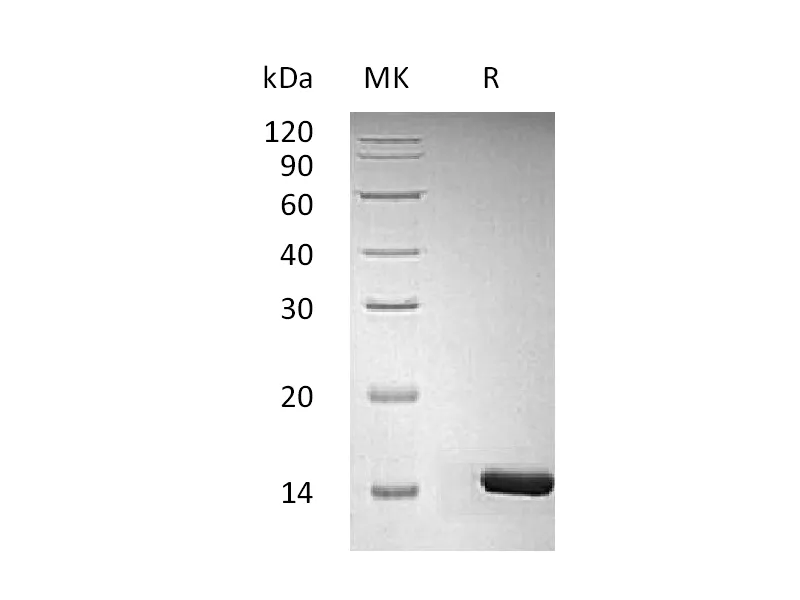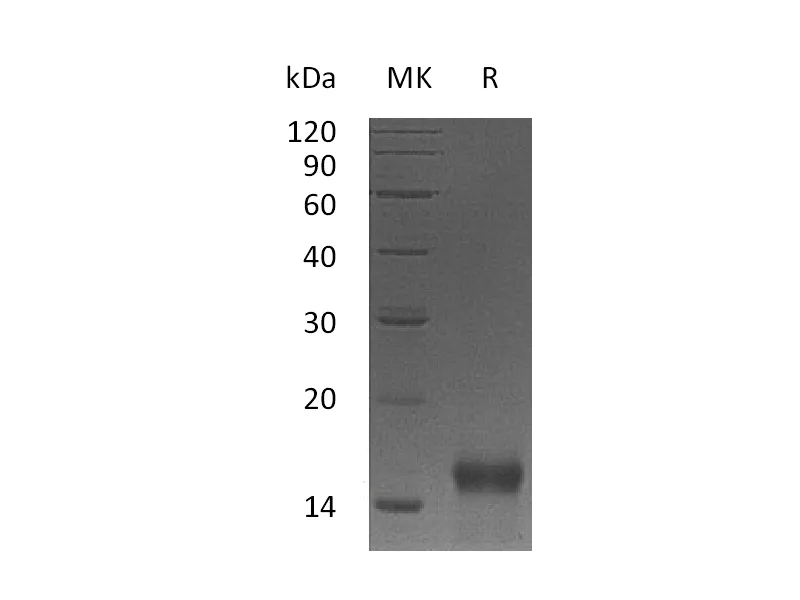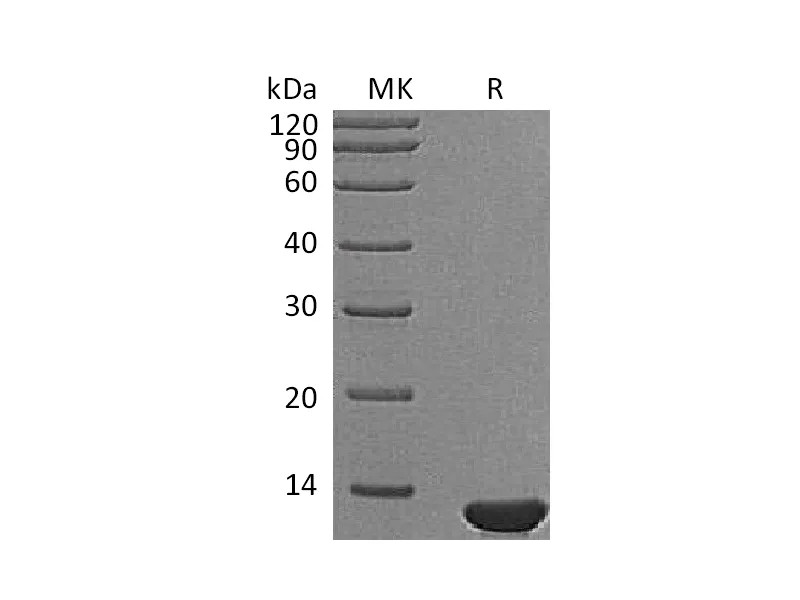Alternative Names
C-X-C Motif Chemokine 9; Gamma-Interferon-Induced Monokine; Monokine Induced by Interferon-Gamma; HuMIG; MIG; Small-Inducible Cytokine B9; CXCL9; CMK; MIG; SCYB9
Background
Chemokine (C-X-C Motif) Ligand 9 (CXCL9) belongs to the intercrine alpha (chemokine CXC) family. It is secreted by interferon stimulated monocytes, macrophages and endothelial cells, which elicits chemotactic functions by interacting with the chemokine receptor CXCR3. CXCL9 acts as a Th1 (type 1 helper T) cell chemoattractant and plays a role in the growth, activation and movement of cells associated with immune and inflammatory responses, and in tumour growth inhibition. It is closely related to two other CXC chemokines called CXCL10 and CXCL11, whose genes are located near the gene for CXCL9 on human chromosome 4.
Note
For Research Use Only , Not for Diagnostic Use.




